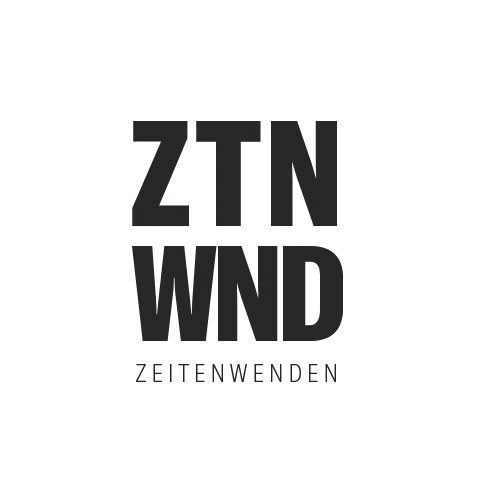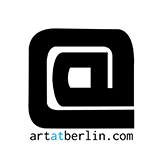For the first time in its history, the Berlin Kupferstichkabinett is presenting its multifaceted and largely unknown collection of works belonging to the artistic cosmos of the Blauer Reiter (Blue Rider) as of 1st March 2025. Wassily Kandinsky and Franz Marc were at the centre of the Blauer Reiter, which was founded in Munich in 1911. Their exhibition activities not only included artists from their inner circle, such as Gabriele Münter and Alfred Kubin, but also protagonists from the national and European art scene, from Ernst Ludwig Kirchner to Robert Delaunay and Natalia Goncharova. Berlin, with its Galerie Der Sturm, was an important platform for the activities of the Blauer Reiter, which came to an abrupt end with the beginning of the First World War in the summer of 1914. In seven chapters and on the basis of around 95 works, the exhibition makes the artistic and stylistic diversity of the Blauer Reiter cosmos tangible.
Image above: Wassily Kandinsky, Zwei Reiter vor Rot, 1911 Farbholzschnitt, 10,5 x 15,7 cm (Druck) © Staatliche Museen zu Berlin, Kupferstichkabinett / Dietmar Katz.
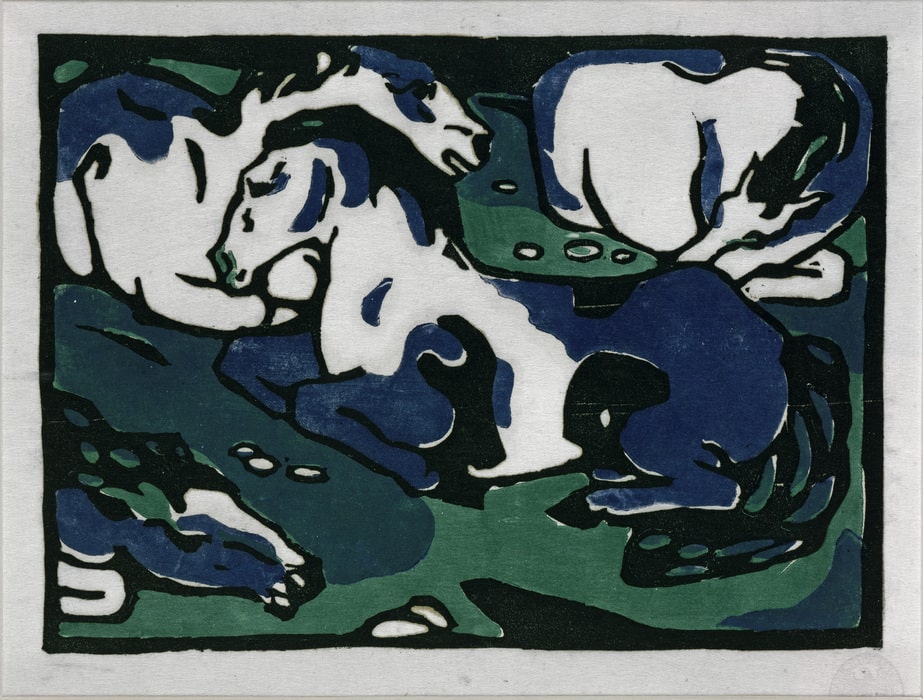
Franz Marc, Ruhende Pferde, 1912, Farbholzschnitt, 17 x 22,9 cm (Druck) © Staatliche Museen zu Berlin, Kupferstichkabinett / Dietmar Katz
The Berlin Kupferstichkabinett has an internationally outstanding collection of modern art, primarily thanks to large groups of works by Edvard Munch, Käthe Kollwitz and Ernst Ludwig Kirchner. However, the artists of the Blauer Reiter movement have also left remarkable traces in the collection – despite painful losses due to the Nazi confiscation of ‘degenerate art’ in 1937, which were partially compensated for after 1945 by purchases for the collection in East and West Berlin, which had been divided for many decades. The works of art by the Blaue Reiter that have now been united in the Kupferstichkabinett at the Kulturforum for 30 years are presented for the first time in the form of a representative selection – from watercolours by August Macke to woodcuts and etchings by Wassily Kandinsky to the illustrations by Gabriele Münter, Oskar Kokoschka and Heinrich Campendonk from the magazine Der Sturm published in Berlin by Herwarth Walden.
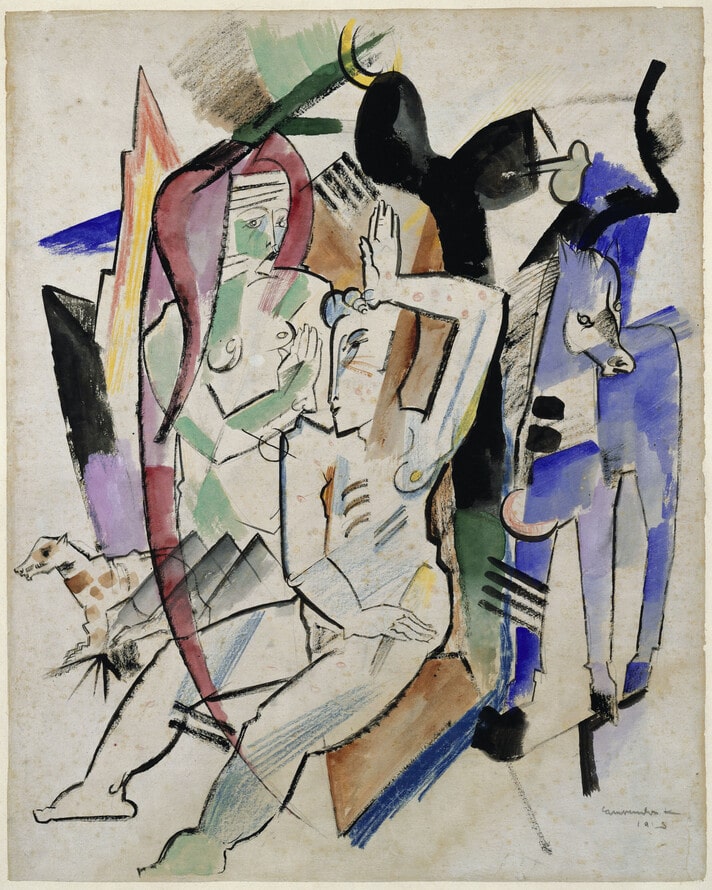
Heinrich Campendonk, Zwei weibliche Akte mit Tieren, 1913, Aquarell und Deckfarben, 53,0 x 43,0 cm, Foto: Staatliche Museen zu Berlin, Kupferstichkabinett / Volker-H. Schneider © VG Bild-Kunst, Bonn 2025
The focus is on important works, some of which are little known, such as the globally unique woodcut Fuga (1907) by Wassily Kan- dinsky or the evidence of the unique pictorial correspondence between the poet Else Lasker-Schüler and Franz Marc. In addition, there are selected loans from private collections and the Staatliche Museen zu Berlin, including the painting The Clock (1910) by Natalia Goncharova (Neue Nationalgalerie), an 18th century Upper Bavarian votive painting (Museum der europäischen Kulturen) as well as two copies of the almanac Der Blaue Reiter and a poster by Gabriele Münter (Kunstbibliothek).

Else Lasker-Schüler, Abigail auf dem Thron, um 1915, Rohrfeder und farbige Kreiden, 18,4 x 21,6 cm © Staatliche Museen zu Berlin, Kupferstichkabinett / Dietmar Katz
Der Blaue Reiter was founded in Munich in 1911 by Franz Marc and Wassily Kandinsky as an editorial group. By the end of 1912, it had appeared in public in the form of two exhibitions and the almanac of the same name, the most important programme publication of modernism. The Blaue Reiter second exhibition, which opened in Munich at the beginning of 1912 under the motto ‘Black and White’, was dedicated to drawing and prints. In ‘Kosmos Blauer Reiter’, one of seven thematic chapters is therefore dedicated to it, which testifies to the fact that the artists of the Brücke, Emil Nolde and Max Pechstein, most of whom lived in Berlin, were integrated here, at least temporarily. André Derain, Robert Delaunay, Natalia Goncharova and Mikhail Larionov were also represented in the exhibition at the time with drawings or prints. In contrast to Gabriele Münter, Alfred Kubin or Paul Klee, many of them did not belong to the inner Munich circle of the Blauer Reiter, but were all the more evidence of its international orientation and stylistic range.

August Macke, Landschaft mit hellem Baum, 1914, Aquarell über Bleistift, 22,2 x 30,9 cm © Staatliche Museen zu Berlin, Kupferstichkabinett / Volker-H. Schneider
At the centre of Kandinsky and Marc’s ideas was the creation of works that visualised spiritual or inner experiences. In this way, the liberation of colour and form from concrete object reference led to abstraction. As can be seen from the example of August Macke, to whom a separate chapter is dedicated in the exhibition, there were clear stylistic differences, especially as the Blaue Reiter was not only concerned with the then current painting and graphic art in Europe: in the search for creative potential and the ‘spiritual in art’ (Kandinsky), artefacts of religious folk art such as votive tablets and reverse glass paintings were given a new appreciation. Russian picture sheets from the 19th century, which became exhibition exhibits at the time, can be found in ‘Kosmos Blauer Reiter’, as can a reverse glass painting by Heinrich Rambold from Murnau, who was so important to Gabriele Münter and her male artist colleagues.
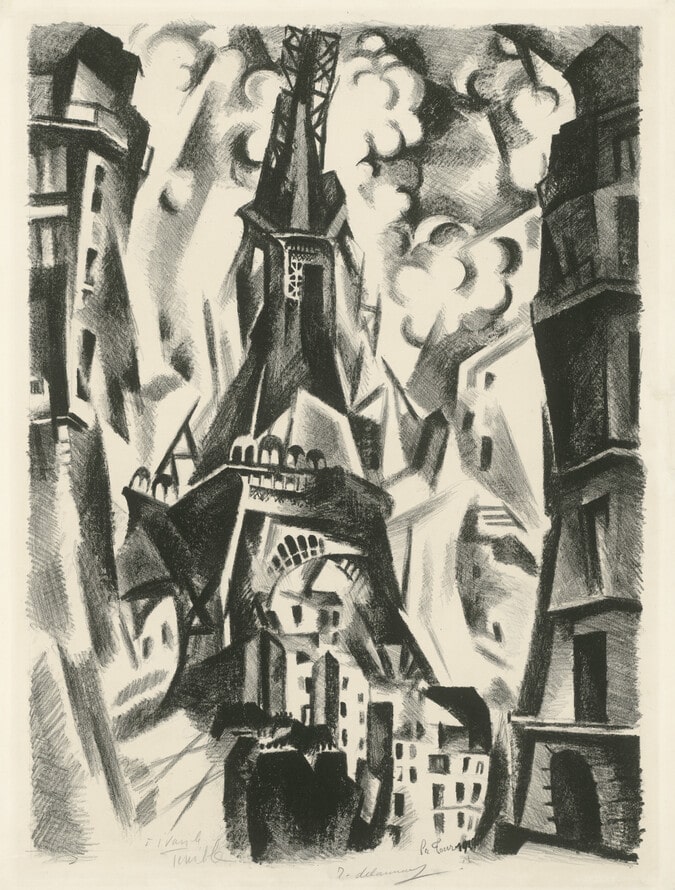
Robert Delaunay Eiffelturm, 1925, Lithographie, 61 x 44,5 cm © Staatliche Museen zu Berlin, Kupferstichkabinett / Dietmar Katz
Selected prints by Jutta Damme, August Gaul, Wilhelm Kuhnert and Bernd Koberling will also be shown in the exhibition for comparison and in depth. Berlin-based artist Daniela Comani, on the other hand, is represented with conceptual photographic works that focus on the question of the visibility and presence of female artists in Der Blaue Reiter. These included, at least indirectly, the Dutch artist Jacoba van Heemskerck, who found her own way into abstraction in the haze of the Berlin avant-garde gallery Der Sturm. This gallery had opened in 1912 with an exhibition by Der Blaue Reiter, which also made her part of Kosmos Blauer Reiter. The seventh and final chapter of the exhibition is dedicated to her.
Artists of the exhibition:
Hans Baldung, Heinrich Campendonk, André Derain, Robert Delaunay, Natalja Gontscharowa, Jacoba van Heemskerck, Alexej von Jawlensky, Wassily Kandinsky, Ernst Ludwig Kirchner, Paul Klee, Oskar Kokoschka, Alfred Kubin, Else Lasker-Schüler, Michail Larionow, August Macke, Franz Marc, Wilhelm Morgner, Gabriele Münter, Emil Nolde, Max Pech- stein und Heinrich Rambold.
‘Kosmos Blauer Reiter. From Kandinsky to Campendonk’ is curated by Andreas Schalhorn, curator of modern art at the Kupferstichkabinett
The exhibition will be accompanied by a catalogue published by Deutscher Kunstverlag Berlin.
WHEN?
Vernissage: Friday, 28 February 2025, 6 pm
Exhibition dates: Saturday, 01 March – Sunday, 15 June 2025
WHERE?
Kupferstichkabinett
Johanna und Eduard Arnhold Platz (ehem. Matthäikirchplatz)
10785 Berlin




